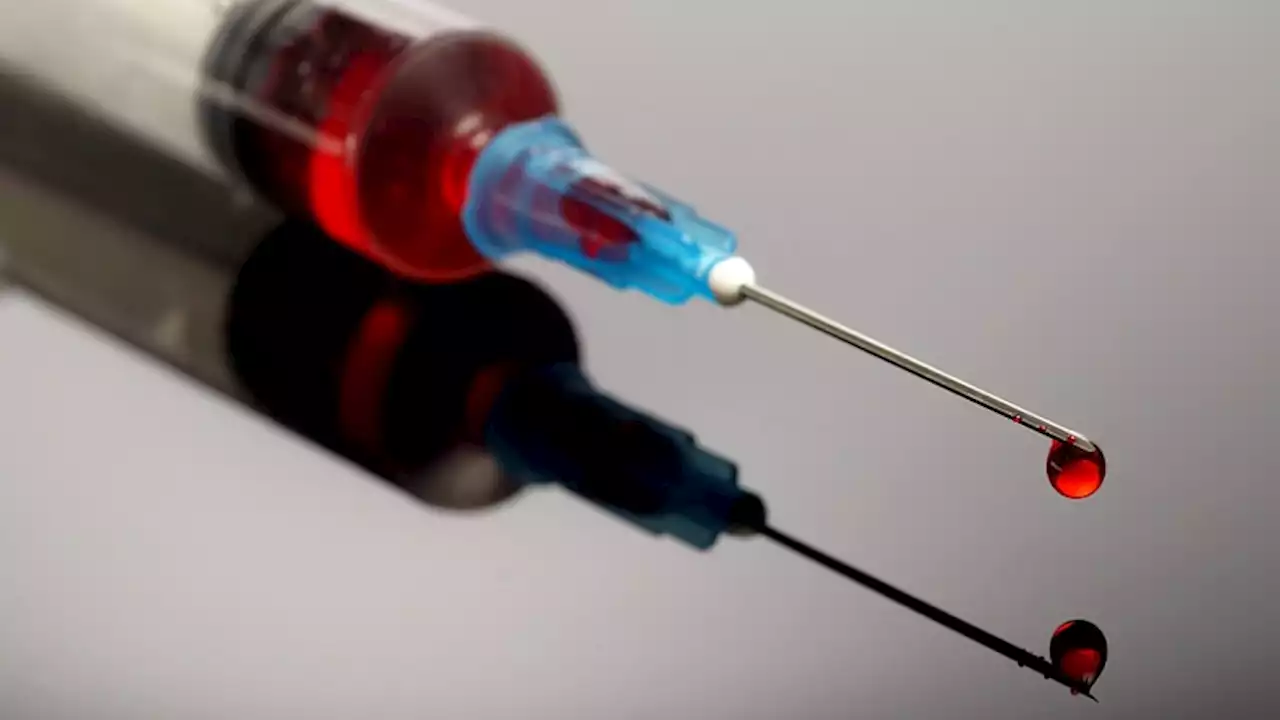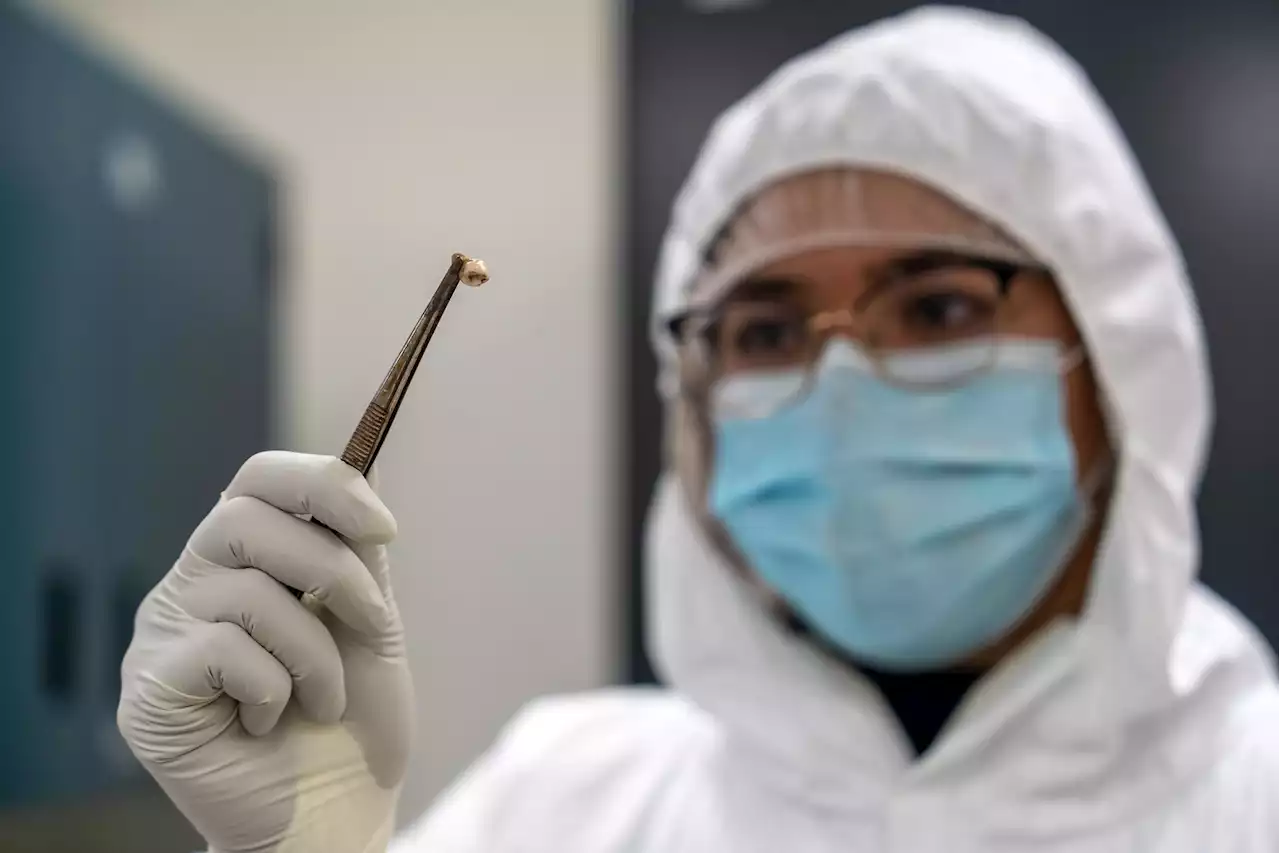A judge rejected the death-row inmates request to have fingerprint and DNA tests conducted on evidence from the two 1980 killings for which he was found guilty over.
PHOENIX — An execution planned next month for an Arizona prisoner remains on track after a judge rejected the condemned man’s request to have fingerprint and DNA tests conducted on evidence from the two 1980 killings for which he’s scheduled to be put to death.
The judge noted the testimony of four witnesses against Hooper, including Redmond’s wife, Marilyn, who authorities said was shot in the head when Hooper and two other men forced their way into the Redmond home on Dec. 31, 1980. Prosecutors had argued that even if someone else’s prints or DNA were found, that wouldn’t overcome the overwhelming evidence against Hooper.
Singapore Latest News, Singapore Headlines
Similar News:You can also read news stories similar to this one that we have collected from other news sources.
 Circulating Tumor DNA Test May Help Guide GI Cancer ManagementctDNA from patients with GI cancers can reflect treatment response, spare some additional treatment, or signal potential remission in those with metastatic cancer, a new study reveals. ACG2022 GastroTwitter
Circulating Tumor DNA Test May Help Guide GI Cancer ManagementctDNA from patients with GI cancers can reflect treatment response, spare some additional treatment, or signal potential remission in those with metastatic cancer, a new study reveals. ACG2022 GastroTwitter
Read more »
Oldest British DNA reveals mass immigrations after last ice ageNew evidence from the oldest known DNA from the British Isles reveals mass immigrations after the last ice age.
Read more »
 Oldest Human DNA Found in the UK Reveals Origins of Early BritonsHuman remains found in two caves are more than 13,500 years old.
Oldest Human DNA Found in the UK Reveals Origins of Early BritonsHuman remains found in two caves are more than 13,500 years old.
Read more »
 How to catch a rapist? Study finds Cleveland, Cuyahoga authorities failed to collect DNA from nearly 15,000 suspects over 7 yearsThe lapses, largely the responsibility of Cleveland police, were the subject of a 2017 Plain Dealer investigation, which cited thousands. The full scope, however, was unknown at the time, posing a question the Cleveland State study now helps to answer.
How to catch a rapist? Study finds Cleveland, Cuyahoga authorities failed to collect DNA from nearly 15,000 suspects over 7 yearsThe lapses, largely the responsibility of Cleveland police, were the subject of a 2017 Plain Dealer investigation, which cited thousands. The full scope, however, was unknown at the time, posing a question the Cleveland State study now helps to answer.
Read more »
![]() Microbial Tracking-2, a metagenomics analysis of bacteria and fungi onboard the International Space Station - MicrobiomeBackground The International Space Station (ISS) is a unique and complex built environment with the ISS surface microbiome originating from crew and cargo or from life support recirculation in an almost entirely closed system. The Microbial Tracking 1 (MT-1) project was the first ISS environmental surface study to report on the metagenome profiles without using whole-genome amplification. The study surveyed the microbial communities from eight surfaces over a 14-month period. The Microbial Tracking 2 (MT-2) project aimed to continue the work of MT-1, sampling an additional four flights from the same locations, over another 14 months. Methods Eight surfaces across the ISS were sampled with sterile wipes and processed upon return to Earth. DNA extracted from the processed samples (and controls) were treated with propidium monoazide (PMA) to detect intact/viable cells or left untreated and to detect the total DNA population (free DNA/compromised cells/intact cells/viable cells). DNA extracted from PMA-treated and untreated samples were analyzed using shotgun metagenomics. Samples were cultured for bacteria and fungi to supplement the above results. Results Staphylococcus sp. and Malassezia sp. were the most represented bacterial and fungal species, respectively, on the ISS. Overall, the ISS surface microbiome was dominated by organisms associated with the human skin. Multi-dimensional scaling and differential abundance analysis showed significant temporal changes in the microbial population but no spatial differences. The ISS antimicrobial resistance gene profiles were however more stable over time, with no differences over the 5-year span of the MT-1 and MT-2 studies. Twenty-nine antimicrobial resistance genes were detected across all samples, with macrolide/lincosamide/streptogramin resistance being the most widespread. Metagenomic assembled genomes were reconstructed from the dataset, resulting in 82 MAGs. Functional assessment of the collective MAGs showed a propen
Microbial Tracking-2, a metagenomics analysis of bacteria and fungi onboard the International Space Station - MicrobiomeBackground The International Space Station (ISS) is a unique and complex built environment with the ISS surface microbiome originating from crew and cargo or from life support recirculation in an almost entirely closed system. The Microbial Tracking 1 (MT-1) project was the first ISS environmental surface study to report on the metagenome profiles without using whole-genome amplification. The study surveyed the microbial communities from eight surfaces over a 14-month period. The Microbial Tracking 2 (MT-2) project aimed to continue the work of MT-1, sampling an additional four flights from the same locations, over another 14 months. Methods Eight surfaces across the ISS were sampled with sterile wipes and processed upon return to Earth. DNA extracted from the processed samples (and controls) were treated with propidium monoazide (PMA) to detect intact/viable cells or left untreated and to detect the total DNA population (free DNA/compromised cells/intact cells/viable cells). DNA extracted from PMA-treated and untreated samples were analyzed using shotgun metagenomics. Samples were cultured for bacteria and fungi to supplement the above results. Results Staphylococcus sp. and Malassezia sp. were the most represented bacterial and fungal species, respectively, on the ISS. Overall, the ISS surface microbiome was dominated by organisms associated with the human skin. Multi-dimensional scaling and differential abundance analysis showed significant temporal changes in the microbial population but no spatial differences. The ISS antimicrobial resistance gene profiles were however more stable over time, with no differences over the 5-year span of the MT-1 and MT-2 studies. Twenty-nine antimicrobial resistance genes were detected across all samples, with macrolide/lincosamide/streptogramin resistance being the most widespread. Metagenomic assembled genomes were reconstructed from the dataset, resulting in 82 MAGs. Functional assessment of the collective MAGs showed a propen
Read more »
 Black Death Shaped Evolution, Setting the Course for How Our Immune Systems Respond to Disease TodayThe Black Death shaped the evolution of immunity genes, setting the course for how we respond to disease today. An international team of scientists analyzed centuries-old DNA from victims and survivors of the Black Death pandemic and identified key genetic differences that determined who lived an
Black Death Shaped Evolution, Setting the Course for How Our Immune Systems Respond to Disease TodayThe Black Death shaped the evolution of immunity genes, setting the course for how we respond to disease today. An international team of scientists analyzed centuries-old DNA from victims and survivors of the Black Death pandemic and identified key genetic differences that determined who lived an
Read more »
